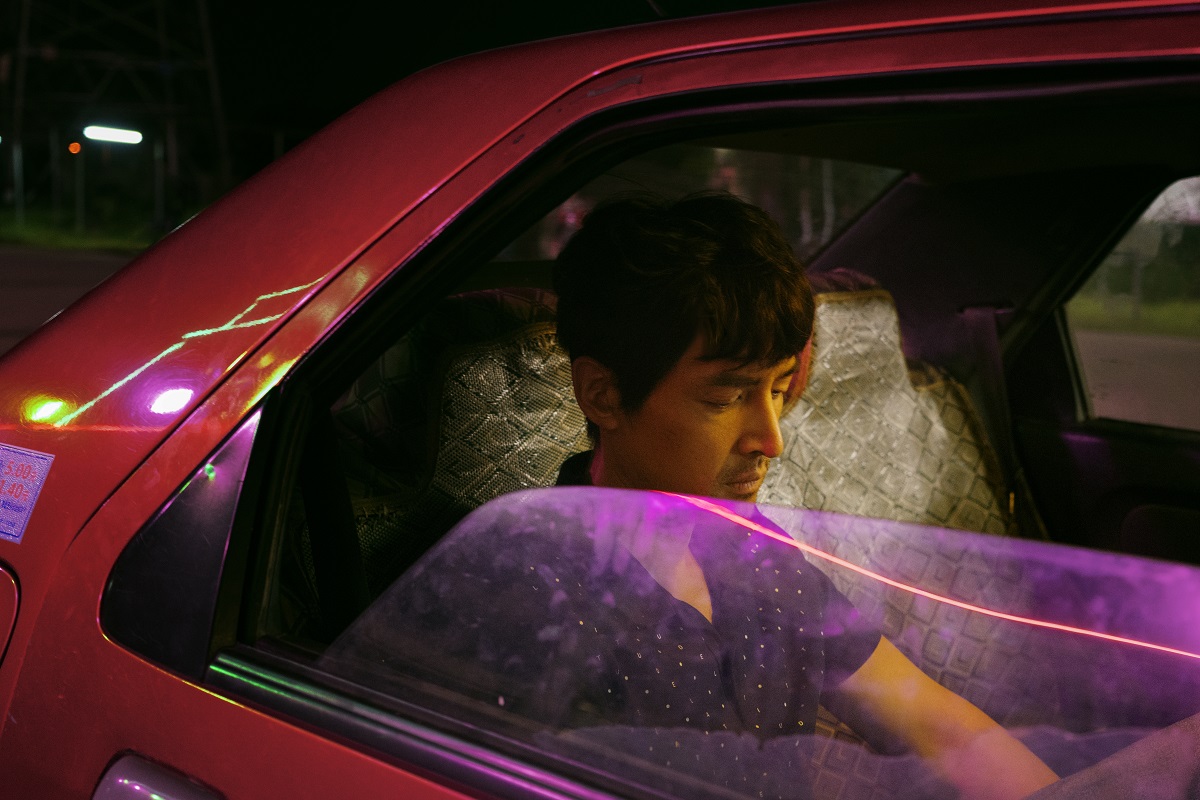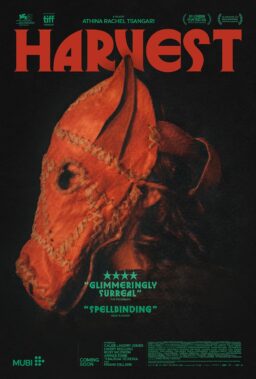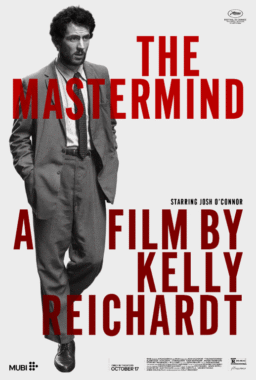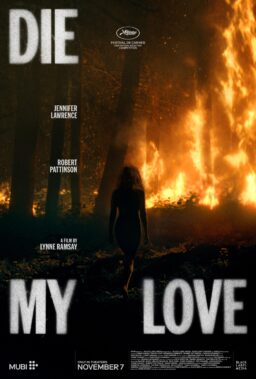Rain and cold are becoming constants in Cannes this week. So much for Riviera sunshine. With the first sign of a drop of rain, scores of street vendors appear out of nowhere with armloads of umbrellas and rain ponchos for sale. They are on every corner, and stay close to the palais exit, pressing their products into eager hands. According to Jean-Michel, the owner of my funky little hotel, “Tomorrow mixed; then nice!” “I called Neptune and ordered it,” he swears with a big laugh, hand held to his ear like a phone.
A nighttime thunderstorm dumps torrents of rain into the streets in the opening scenes of Chinese director Diao Yinan’s (“Black Coal, Thin Ice”) competition entry “The Wild Goose Lake.” A man and a woman meet for the first time under the overhang of a railway station entrance, but their meeting is not an accident. The man, Zhou (Hu Ge), is on the run from police, and needs a favor. The woman, Gwei (Liu Aiai) has something to run from too, but for a different reason, and she’s there under orders to help Zhou. In Diao’s neo-noir, this will be the last time that anything is relatively clear.
Zhou begins to tell his story in flashback. In the basement of a hotel, members of rival gangs are gathered for a detailed tutorial on how to steal motorbikes. When the session gets down to divvying up territories, violent fighting erupts, a gun is pulled, and one mouthy young guy gets kneecapped. Diao drops a realist style for just a few seconds of high-speed action-film impressionism that makes for a shot of adrenaline in an otherwise slow-burning film.
A leader proposes that the conflict be resolved through “the Olympic games of theft.” Whichever gang scores the most stolen motorbikes that night earns the right to choose territories. In the course of the contest, Zhou accidentally shoots a cop, becoming a wanted man. He knows there’s a price on his head, and his request to Gwei, a part-time prostitute, is that she turn him in for the reward and pass the money on to his wife.
Most of “The Wild Goose Lake” takes place at night in the murky light of alleys and dimly lit passageways. With the police not far behind Zhou, the film becomes an endless and convoluted chase, from room to room, and in and out of anonymous maze-like streets. It is often unclear whether Gwei, a woman with an impassive unreadable face, is Zhou’s accomplice, his savior, or his betrayer.
In a scene in which Zhou seems fatally trapped between gang members on the upper floors of a seedy apartment block and the cops down below, Diao kicks in another of the film’s rare shots of adrenaline. A high-octane fight scene and a sensational novelty kill involving an umbrella brought appreciative vocal reactions from today’s audience. Diao is capable of conjuring up bristling tension and suspense with a shot of two people slurping noodles, so it is all the more a mystery that “The Wild Goose Lake” has atmosphere to spare but so little narrative drive.

Screening in the Un Certain Regard section of the festival, French director Bruno Dumont’s “Jeanne,” a sequel to his 2017 “Jeannette: The Childhood of Joan of Arc,” begins this final chapter in Joan’s journey in 1429, in the dunes on the coast of Normandy. It’s a favorite setting for other Dumont films including satirical screwball comedies “Li’l Quinquin” and “Slack Bay.” Many films have interpreted the Joan of Arc story, most notably Carl Th. Dreyer’s silent-era masterpiece “The Passion of Joan of Arc,” but none with the eccentricity and experimentation of Dumont.
He has returned to Cannes many times since winning the Camera d’Or in 1997 for his first feature “The Life of Jesus,” a raw contemporary portrait of a French village. He won the Jury Prize twice, for “L’Humanite,” 1999, and for “Flanders,” 2006. “Jeanne” is a film to be marveled at for its original vision and audacity, but it’s not conceived as a crowd-pleaser. Dumont requires a patient and dedicated viewer.
Dumont’s Joan (Lise Leplat Prudhomme, allegedly only 12 years old) is a child. She is only slightly older than seen in “Jeannette,” when she began hearing the voices that led to her heavenly inspired mission to drive the English from France. As in “Jeannette,” her thoughts and prayers are presented in the unorthodox form of musical numbers. Joan kneels in the sand to pray, looking up to the blue sky. In a very extended sequence, a rock ballad sung to a rippling electronic melody recounts her military victories and one recent loss in graphic terms. “Hammers crushed helmets and skulls … I was a warlord.”
This is a film that is more pageant than drama. In another very lengthy sequence, a large military drum corps accompanies equestrian troops to perform ceremonial maneuvers with Joan on horseback at their head. Dumont choreographs elaborate troop formations, often utilizing overhead photography to reveal the increasingly intricate patterns and snaking movements. At one point, Joan’s horse (obviously a highly trained stunt animal) dances his hooves in time to the drumbeats for several minutes.
Dumont chooses not to depict any aspect of Joan’s story that might be action-oriented. No battle scenes are seen. Her capture by the English is not onscreen. The film moves ahead to the first day of her trial, set in Rouen cathedral in 1431.
Throughout many of the scenes set in the cathedral, Dumont slightly distorts the frame in order to minimize human figures within the magnificently soaring vertical lines of the architecture. The building itself is a setting that commands the eye, even more so in Dumont’s embrace of it as an overwhelming presence on the screen. Joan’s elaborately robed judges enter the church one or two at a time and bow before the high altar, which is richly embellished with gold and marble.
Acting in Dumont’s more recent films is a deliberately stylized range from stand-and-deliver declaiming to tic-ridden emoting. The churchmen judging Joan are caricatures both self-righteous and buffoonish, sporting many of the facial quirks and gestures that have typified performances in Dumont’s comedies.
Joan herself is a resolved and immovable presence, her voice a plainspoken childish piping against the elaborate canonical arguments of the men. As she refuses once again to repudiate her testimony, a bizarre falsetto ballad describing the horrors of hell is made to emanate from the mouth of an elderly hooded priest. His fellow clerics appear to lose control of their eyes, which roll, bug out, and tremble.
The director doesn’t stint on his portrayal the trial, and like other films on Joan, follows material from the medieval transcripts. When it comes to what many a director might consider the meaty narrative payoff of the story, the torture, sentencing, and execution of Joan, Dumont again deliberately avoids the obvious. A rack in the shape of a cross is prepared in the shadow of former Nazi bunkers on the Normandy coast, but the scene involves the torturer and his apprentice discussing the effectiveness of an iron leg cuff.
More torture materials are laid out in the cathedral in the presence of the jurors, but the clerics argue conversion methods for heretics among themselves. The bunkers are seen again as Joan’s English prison. Her execution is arranged and then delayed, all of this relayed by way of gossip among three loutish young guards. When Dumont finally suggests the start of the execution, only a small immobile figure at a stake is seen far in the distance.












